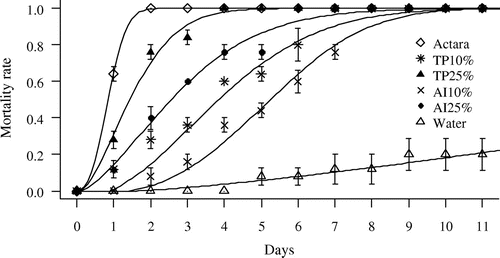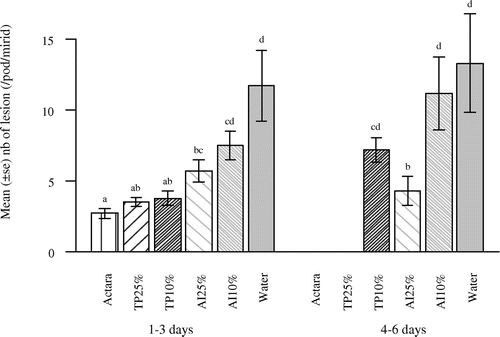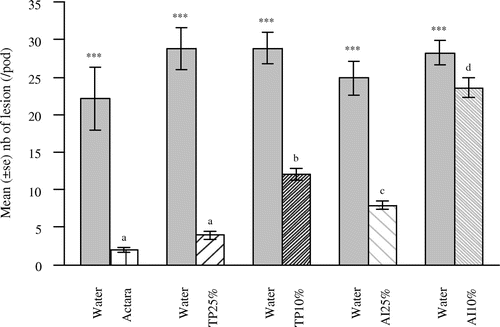Figures & data
Table 1. Average number of mirids per treatment and per site before and after application of the aqueous extracts during the 2013 and 2014 cacao seasons
Figure 1. Effect on the mirid mortality rate of aqueous extracts of T. peruviana and A. indica applied directly on mirid bugs.

Figure 2. Effect on the number of pod lesions of aqueous extracts of T. peruviana and A. indica applied directly on mirid bugs for two periods (one to three days and four to six days post direct application). Different letters refer to significant differences (Wilcoxon test, p < 0.05).

Figure 3. Effect on pod lesions of aqueous extracts of T. peruviana and A. indica applied to pods (residue toxicity).

